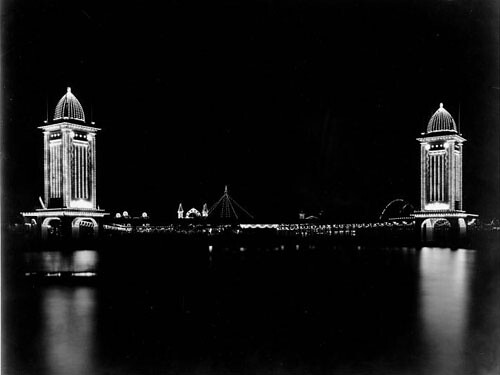Glen
Moderator
A long history of experimentation in electric lighting came to fruition in the golden 1870s when several inventors chanced upon the graphite filament for incandescent lighting. With this innovation in hand, the rush was on to provide electric illumination to the masses. Early models of providing electric power beyond local production started with the classic direct current means of electric production, but quickly it became obvious that alternating current production would allow for a wider and more effective transmission of electrical power. President Poe was an early proponent of central electrification and Washington would become one of the earliest cities in the world to develop an electric grid and to provide electric street lighting (some wags claimed that Poe was afraid of the things that might live in the dark). Not to be outdone in their intercity rivalry with the nation's capital, neighboring New York City soon followed suite, led by industrialist financier Steven Van Der Werken. Soon, all of New York State and then the Northeast would be swept up with a wave of electrification, with Van Der Werken in association with Ontario businessman Etienne DuBois sponsoring the largest hydroelectric production operation of the age at Niagara Falls. By the turn of the century, all major American Cities would claim at least some level of electrical grid.
While Paris had played with early electrification prior to the Global War, it was in the rebuilding of Europe that the electrification craze would start in earnest on that continent. Victor and vanquished alike would find generous terms for support from the Poe administration for the Europeans to electrify their cities (using American expertise and manufacturers, of course). The Germans and Prussia-Poland would embrace electrification the most vigorously in the post-Global War period, but all of Europe would soon follow as well.

While Paris had played with early electrification prior to the Global War, it was in the rebuilding of Europe that the electrification craze would start in earnest on that continent. Victor and vanquished alike would find generous terms for support from the Poe administration for the Europeans to electrify their cities (using American expertise and manufacturers, of course). The Germans and Prussia-Poland would embrace electrification the most vigorously in the post-Global War period, but all of Europe would soon follow as well.
